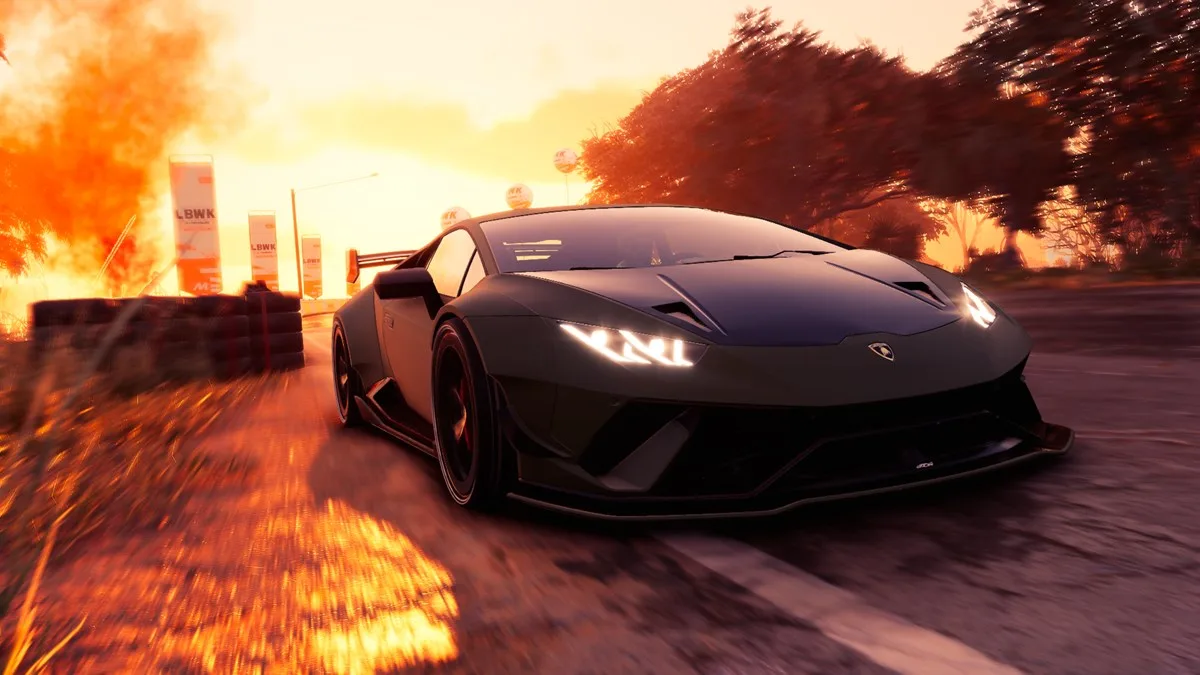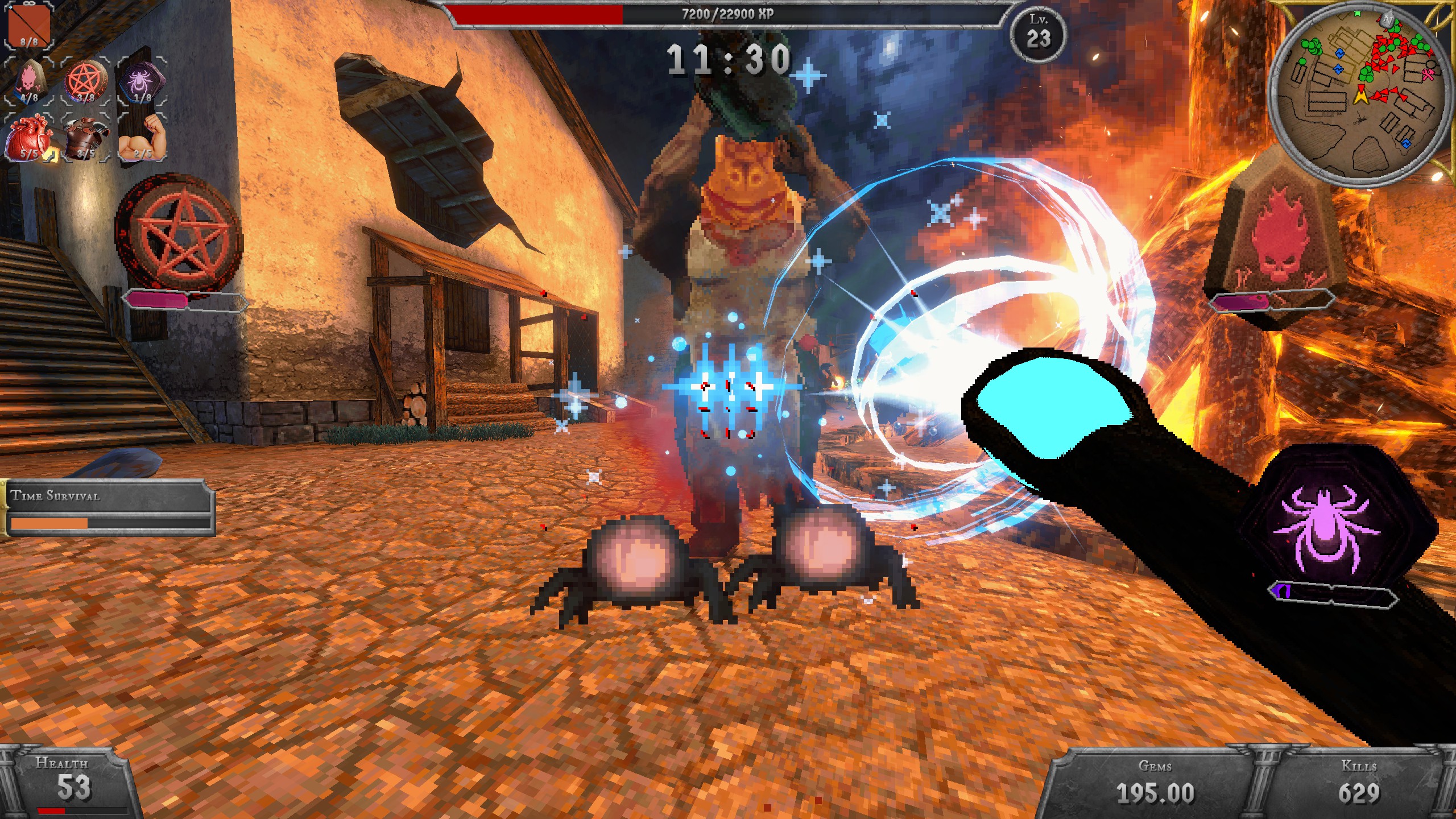The Crew Motorfest is like a cool-looking, but temperamental car. Sitting in a garage after it’s been polished, it looks so good. Then you open the door, get comfortable in the seat and crank the engine; it sounds lovely, too. Rolling it out onto the street, the ride is smooth, and you let the engine spool up a bit.
Eventually, you get onto a nice, lonely road and open it up—those first few moments are exhilarating. But, then you hear a weird knocking sound, and a ‘Check Engine’ light comes on. Annoyed, you pull over, pop the hood, and after a quick glance, you let out a snarling sigh. “I thought I fixed that yesterday!”, you exclaim. “What gives?”, you wonder. This is the third problem the car has given you in a week, by the way. Do you see where I’m headed with this?
Tests of the Motorfest
Let’s cut to the chase: this is as close to Forza Horizon as a competing open-world racer has ever gotten in terms of both themeing and execution. While The Crew 2 already kind of flirted with the fictional festival concept, which was already a massive tonal shift for the series, Motorfest pretty much leaves nothing to the imagination when it comes to ‘taking inspiration’.
From the overly-excited presenters, which there are many of, to the over-the-top nature of the brand completely taking over its host location, there’s absolutely no running away from the comparisons.
They say that imitation is the sincerest form of flattery, and in this case, that remains true. Forza Horizon has garnered widespread attention and praise for good reason; it has its flaws, and some folks don’t even think it’s deserving of its reverence, but the series has at least been consistent with providing a very polished open-world racing experience.
The Crew, meanwhile, still feels like it’s going through the awkward phases of puberty; stuff keep changing, and just when it seems to figure things out, something new comes along and creates some disarray.
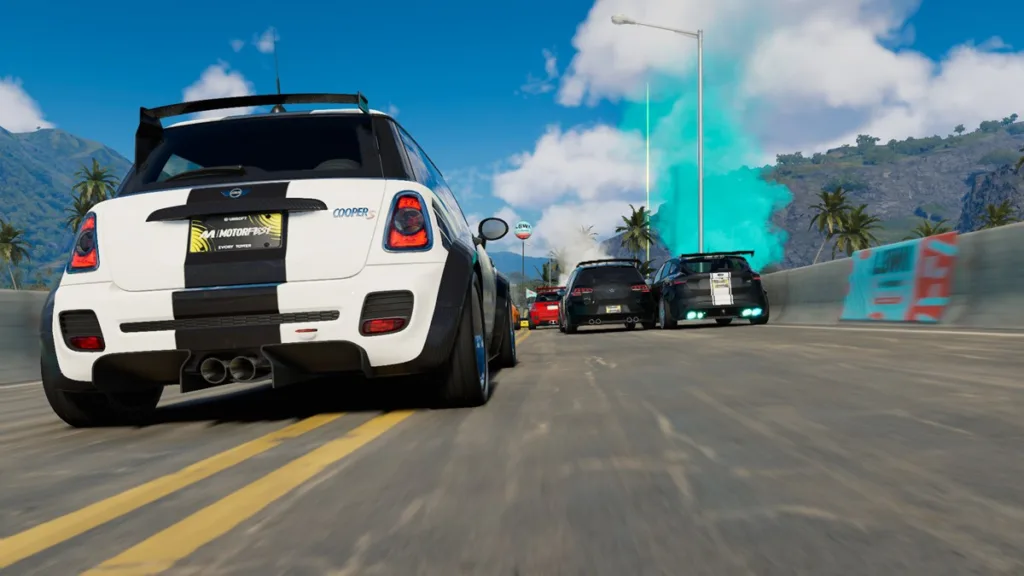
Motorfest is fine, and often times fun, but there are some pot holes in this road that need some attention. And considering all that the team over Ivory Tower did to enhance and retool the experience of The Crew 2 over its lengthy five years of support, some of Motorfest‘s problems are confusing to me.
One step forward, two steps…left?
The absolute biggest issue has to do with the sense of progression.
In the “good ol’ days” of racers, knowing what to do next was as easy as following a straight road. Keep beating tracks in 1st place, move onto the next one, gradually get access to better cars by unlocking them or purchasing them, honing your skills along the way.
As racers got more advanced, particularly after the open-world sub-genre became more popular, this concept still didn’t really change all that much for quite some time.
There were some racers that got a little creative, such as having you search for cars around the map to unlock them. Others had you beat a car in a race to unlock it. Nevertheless, the formula has been tried and true: start with a simple ride, complete the beginner races, and work your way up the ranks.
Forza Horizon has become known for diluting that formula by being a bit too generous with dispersing cars and currency, seemingly throwing them at the player any chance it gets, particularly in the recent Forza Horizon 5. Still, it has the tentpole mechanics of having special events you need to work your way up to unlocking, even if you can technically do so at your own pace and in the order you choose.
With these thoughts in mind, how does Motorfest opt to handle things? I still…don’t know? Honestly, I’m still trying to properly figure that out.

13 hours in, and only by hour 9 did I seem to grasp exactly what I was doing. I don’t think that’s ever happened to me while playing a racer, and the fact that I still don’t quite know is both comical and a tad vexing.
From what I can surmise, however, Motorfest’s playbook works like this.
At launch, there are 15 “Playlists” to complete. Each Playlist is dedicated to a very specific theme. For example, one is called Offroad Addicts, which features quad and buggy races, while another is Liberty Walk, which is dedicated to racing various heavily-customised renditions of famous cars that have been given a Japanese overhaul.
Each Playlist contains a varying number of events (usually about 6 to 8), and these events also vary in type.
Sometimes you’re racing 1-on-1, while others are traditional grid races, but then in others it’s a time attack—and the list goes on.
You’ll get a somewhat-lengthy briefing before each race from your AI Assistant ‘Cara’ (who I would like to disable, but haven’t figured out how), so you know what to expect, at least.
The thing about these Playlists, however, is that they almost feel more like ‘albums’, per say. What I mean by that is that, much like an album released by an artist, you have to experience the contents ‘as is’. In every single Playlist event, you have to pilot a pre-selected craft. Only after you’ve completed the entire Playlist can you go back and actually drive, fly or sail what you want (within the confines of vehicle type and category).
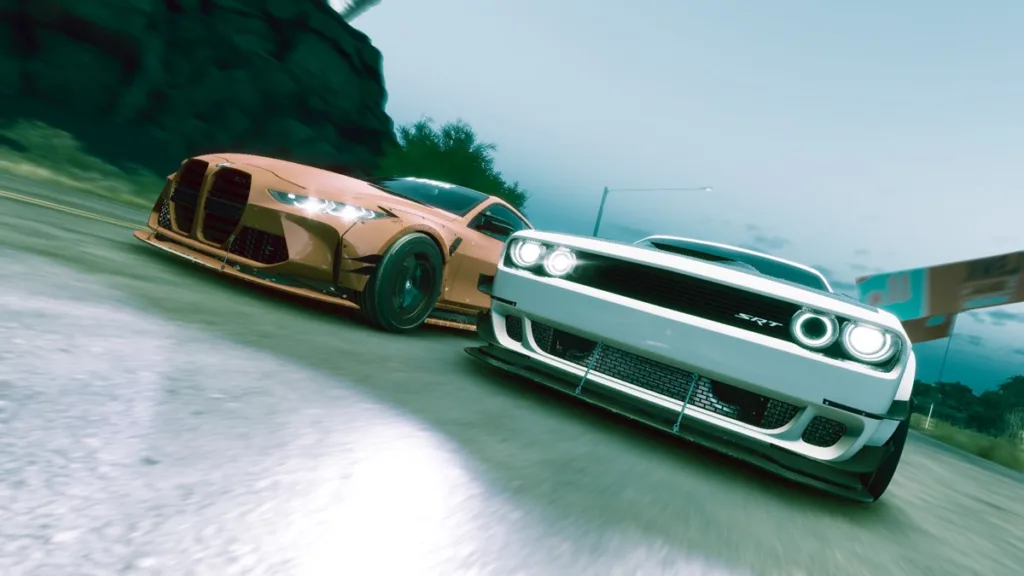
This isn’t egregious, but for a racer that advertises having hundreds of vehicles in its roster, it doesn’t give you much freedom to use them. This also happens to apply to the way the events have been curated.
One point of consistency that has been kept in The Crew Motorfest from its predecessor is that the variety of vehicles is still here, and even expanded upon.
While standard cars are here, powerboats, planes, and various off-road toys are also at your disposal. Not to mention that the map of the Hawaiian island of O’ahu is an awesome playground for making use of all of these machines.
Hopefully you enjoy your portions in bite-sized pieces, however.
Sample platter
That term is the best way I can think to describe how The Crew Motorfest serves up its vehicle offerings. With each Playlist being dedicated to a very specific theme, you’ll often find yourself locked into a certain category of vehicle throughout its duration, with little to no overlap whatsoever.
For instance, the Hawaiian Scenic Tour Playlist has a helping of nearly each vehicle type, including one where you pilot an aircraft and another where you pilot a boat, with the others being ground-based affairs. But, this is the only Playlist so far that allows you to make use of the whole collection this way.
Meanwhile, there’s an entire Ocean ‘N Sky Playlist that’s dedicated exclusively to planes and boats. Having played this Playlist after completing two others prior, it served as a fun change of pace, but when it concluded, I realized that it was back to being grounded, outside of the open-world (which I’ll get back to soon).
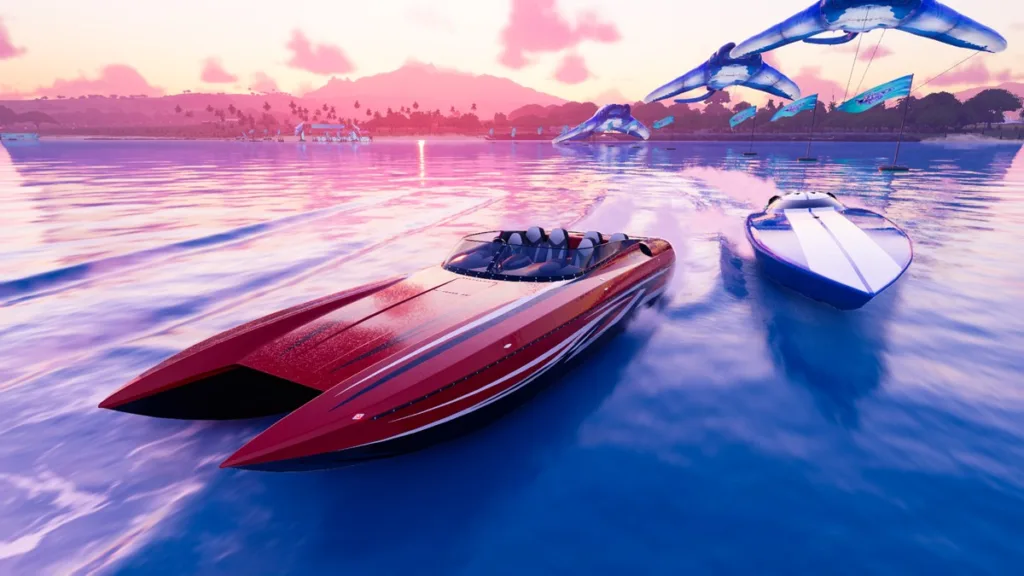
When it was revealed that planes and boats would be returning, in addition to new vehicle types like quads being introduced, I was very excited to see how the game would encourage use of them all. But, they’re all mostly regulated to their own little portions of the experience, with a rare amount of overlap.
The Crew 2 had this same problem, and I was hoping Ivory Tower would lean into this concept more for Motorfest as it serves as the key differentiation between this and literally every other open-world racer out there.
To add more smoke to the exhaust, it should also be noted that before you even get to dive into a Playlist, you first need to pony up your precious units of currency.
Bucks and Crew Credits both make a return, and the in-game economy is still just as cutthroat as before. That is to say that money is easy to spend, but hard to accrue, if you’re doing it by the game’s standards that is.
“Rise and grind”
The catch with each Playlist is that a specific vehicle is required to be purchased before you can enter into the Playlist. Mind you, often times you’ll be loaned different vehicles throughout the different events in a Playlist, not to mention receive one as a reward at the end of it (in addition to XP and Bucks).
Yet, you basically have to pay an entry fee each time you start another Playlist. There’s also the option to buy a Playlist Bundle, which includes two or three vehicles featured in the Playlist at a slightly reduced cost.

Regardless of which option you go with, however, it will take some time to grind your way through previous events and the dozens upon dozens of superfluous side gigs to have enough. That’s yet another facet of the Playlists. Once you complete their main events, extras open up in the form of Challenges and Feats, the latter of which returns from The Crew 2.
Playlist Challenges can range from something as simple as exploring the open-world for a certain distance in (once again) a specific vehicle, to something far more complex such as replaying a specific event several times with a specific vehicle.
Feats are a lot more straightforward, and are short trials scattered around the open-world map such as slaloms and speed traps, just to name a few. Again, a specific vehicle is sometimes required, though more often you can do it with whatever you choose.
The seemingly endless number of events/quests both large and small, while all do their jobs of padding out the gameplay, still boil down to serving the same purpose: keeping you in a necessary gameplay loop to earn Bucks so you can ‘progress’ further.
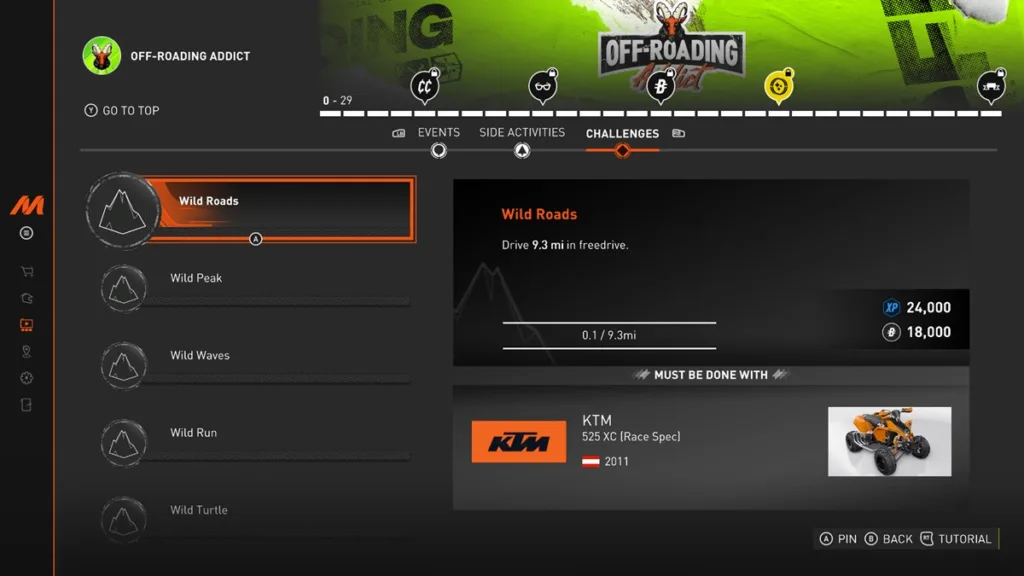
I still use the term ‘progress’ loosely because I honestly don’t feel a real sense of progression, despite the several hours I’ve put in thus far.
Forza Horizon 5 caught flack fired by some of its players for leaving them with similar feelings of aimlessness. I sort of got that notion to an extent, but not to a degree where it felt like a genuine problem throughout my own playthrough. Now, with the context of The Crew Motorfest’s system in mind, I have to praise that game for feeling far more grounded by a mile.
In Forza Horizon, races are nested under specific festival locations that are dedicated to specific categories. Similar to Motorfest’s Playlists, but they can be completed in just about any order. You level up, gain money, and keep going. Often you’re never locked out of something. Not to mention that each Festival has its own special Showcase event, which essentially functions as a boss event.
The Crew Motorfest, on the other hand, bobs and weaves throughout this whole process. Each event has its own skill cap; some are easy, and others will have you hitting ‘restart’ a few times. The final event of each Playlist can also vary in its feeling of being a genuine ‘grand finale’.
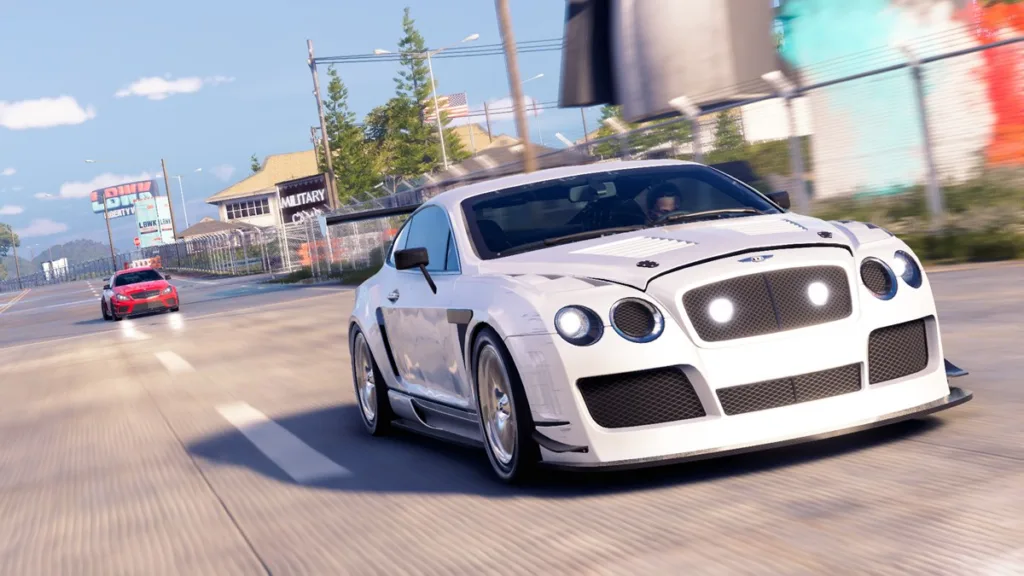
For instance, the final event in the Ocean ‘N Sky playlist involves piloting the iconic Gee Bee Racer aircraft throughout a series of rings above and around Honolulu, which is no different than the handful of other aircraft events that precede it in the same Playlist.
The final event in the Liberty Walk playlist, however, is very similar to Horizon’s ‘Goliath’ races, where you’re involved in a lengthy, endurance-style triathlon race around the entire perimeter of Motorfest’s O’ahu. Split into three sections to match the three cars you drove in the preceding events of the Playlist, you’ll gradually swap between each as you hit each section. This race took me over 18 minutes to complete. At the time of publication, the leaderboard champion clocked just over 13 minutes.
Neither are unheard of lengths for a racer (as any Gran Turismo fan surely knows), but the challenge of this race comes from its length. If you choose to go full hardcore and disable the newly-added Rewind feature (which is a nice addition, albeit with the caveat of it not moving your stopwatch back), then restarting such a race due to a single mistake is genuinely challenging. Arguably, it serves as a much better finale than that of the aforementioned Ocean ‘N Sky Playlist.
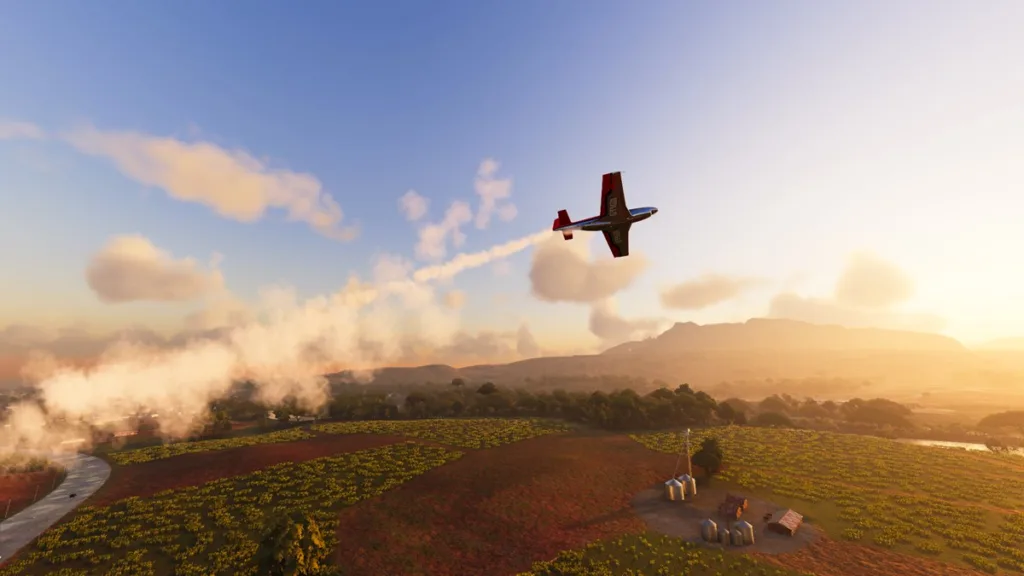
What perhaps might have been a more interesting final race for this Playlist could have included another vehicle-swapping endurance mechanic where you would start in one vehicle type and then switch to the other mid-race to finish off the second half.
Case-in-point, the Motorfest Playlists are ‘fine’, but their scope and execution leaves a bit to be desired.
Locking each Playlist behind an exorbitant paywall makes the gameplay needed to bypass that wall sometimes feel like needless padding rather than genuine engagement. But, that just seems to be what a good portion of Motorfest leans on, which is something I only discovered, once again, very late into my playthrough.
Stay connected, or else
Beyond the Playlists and their various extra trials, there’s the Main Stage. Despite its name, however, it’s not really the main center of the game. That is, it won’t be the center if you’re playing this more like a mostly single-player experience.
All elements of The Crew Motorfest is tied to being online. As a test, I disabled my laptop’s WiFi connection while still in-game, and moments later, I got a ‘Disconnected from server’ message and was promptly booted to the game’s main menu. I tried to restart my session, but the loading screen just kept spinning until I reestablished a connection.
Since I have a gaming laptop, I can’t even enjoy this title on-the-go without a dedicated connection, which is a shame.
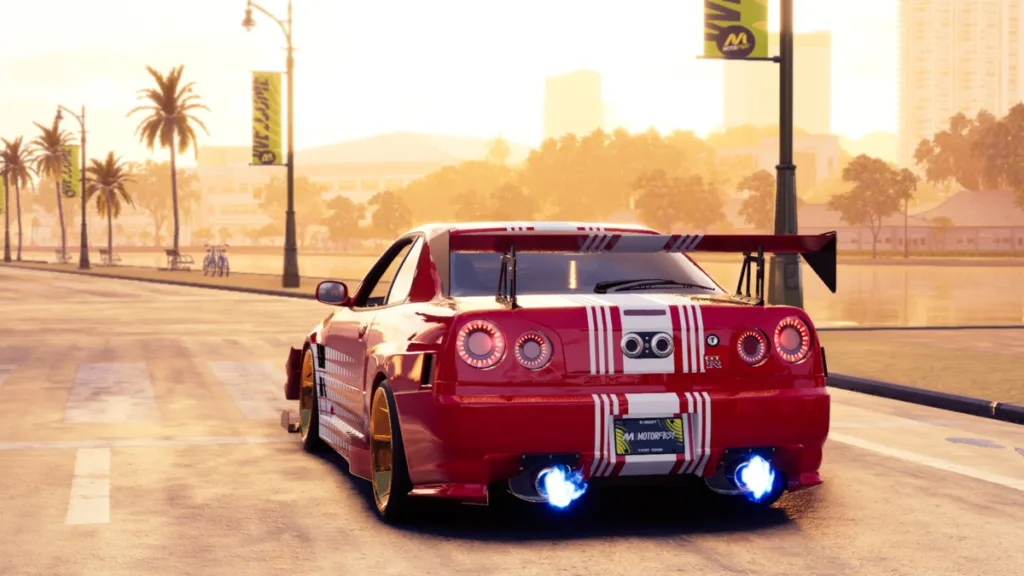
Nevertheless, once you’ve completed three Playlists, the Main Stage will open, and so will its three facets: Revisit, Compete and Explore. All of the activities require you to follow the guide of your AI assistant.
Revisit involves going back to already-completed races from different Playlists, now with a different required vehicle and usually a different theme; the course layout will stay the same, however.
Compete involves you entering the Summit Contest, which is a weekly-themed live event. You’ll compete against other players in activities, compare scores and rank up in the leaderboards. Each rank includes special rewards.
Finally, Explore involves completing a chain of Feats around the map as well as finding and completing different Freedrive activities (like hunting for hidden part lootboxes, which return from TC2).
All of the Main Stage’s content is tied to a weekly theme, so it’s clear that Ivory Tower is certainly hoping its players remain engaged enough to keep up the grind each and every week. This concept isn’t new at all. The Crew 2 had similar mechanics after its many updates, and Forza Horizon has had the weekly Forzathon Challenges and the Horizon Playlist for quite some time now.
Really, the weekly activity types across both titles are very, very similar. And, this is a shame on Motorfest’s part because, while taking the idea isn’t inherently bad, it arguably had a more interesting concept with the Motorpass, Motorflix and Stories elements that were all eventually introduced in The Crew 2.

Thus, this Main Stage system feels far too much like an agitating imitation, and with the grind-heavy, almost aimless nature of the rest of the game already at play, me unlocking this triggered more in the realm of confusion than excitement.
Sure, doing all these different missions and quests nets me some XP to boost my level and gives me Bucks to spend and rewards to earn, but when there’s no seemingly real endgame at stake, then it almost makes you wonder: “What’s the point?”
Really, I have yet to really discover what that endgame could be. I could be the Playlist Champion, but then what? The ‘best vehicles’ aren’t locked behind a skill wall, they’re locked behind a paywall, after all.
Riders Republic, yet another online-focused extreme sports title from Ubisoft, is built on a very similar system. Both games also sneakily rely on a dual-currency model where you can earn the ‘basic’ in-game currency through regular activities, but the premium currency (Crew Credits, in this case) is a lot harder to come by naturally due to the fact that a bundle of such can easily be purchased with real cash.
Doing so will not only grant you access to premium items that are often locked behind the Crew Credits, but you can also more quickly nab new vehicles, particularly those needed to go through the Playlists and Main Stage events.
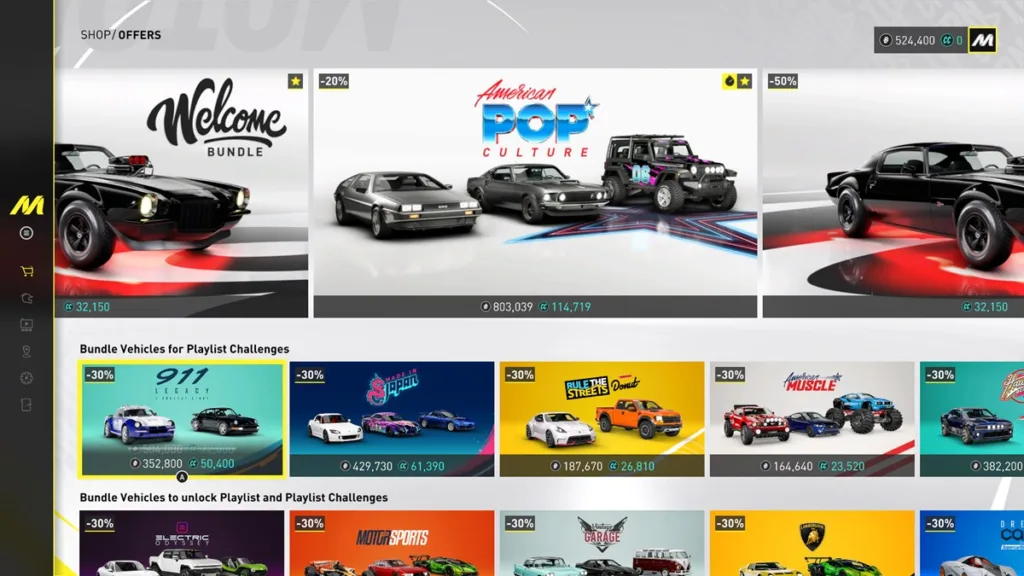
Considering these are both AAA titles with very expensive price-tags, it’s a shame this system is still being pushed so heavily.
Sure, it’s mostly avoidable; you really don’t have to invest an extra dime past the initial cost of the game. But, with funds of some sort being needed to actually play the activities in Motorfest, I started to feel like I had been dropped into an amusement park and was trying to gain credits for the sake of having the privilege of enjoying the attractions.
Somehow, Motorfest’s implementation of this system feels more heavy-handed than that of what’s in Riders Republic, in addition to that of what was already the case in The Crew 2, and that’s why it stands out to me as an issue.
Looking past the scratches
Let’s go back to that temperamental car analogy from the beginning.
It’s back in the garage now, with its hood open. You’ve turned some screws, tightened some bolts, and checked some valves, then secure the hood once more. Weary from all the fuss, you turn in for the night, and then come back out the next morning to start her up again. Taking her for a quick jaunt around the neighbourhood, you remember why you still happen to like this stupid thing, problems and all.
This is where I’m at The Crew Motorfest.
I know I’ve essentially dragged this title against the guardrail throughout this piece thus far, and I do think it deserves it. But, I’d be lying if I said I haven’t had any fun with it all.
The map of O’ahu is the best work that the designers at Ivory Tower have put together yet. From its look to its feel, this is a very well-made map for a racing game.
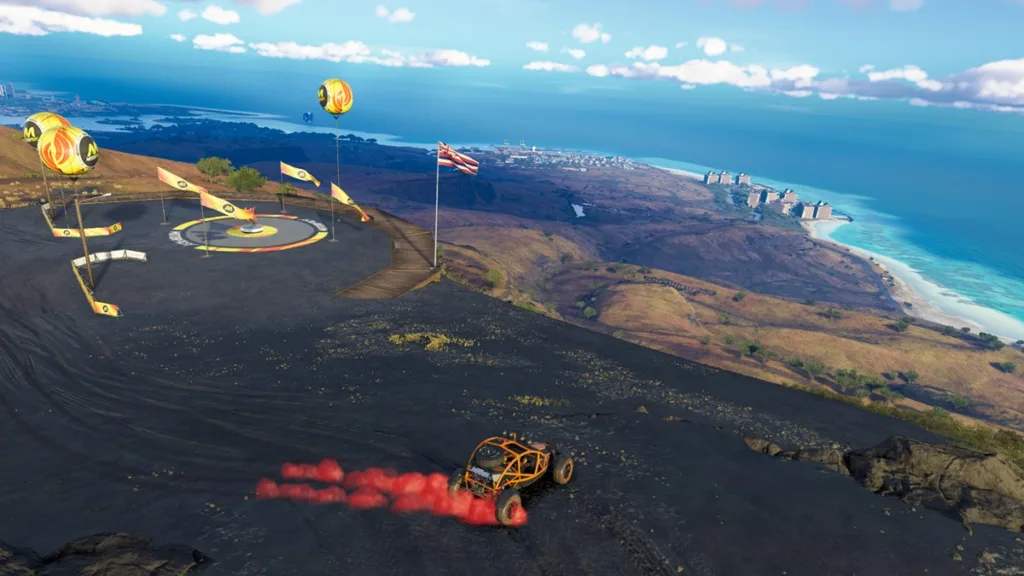
If the maps of Motorfest and its predecessor were burgers, then I’d reckon’ to say that The Crew 2‘s stylized take of the continental US, while impressive, came out like a really decent Big Mac. Motorfest, on the other hand, seems to have itself something closer to an artisanal burger from a grill house. Honestly, I’m just hungry, but I do stand by this comparison. Simply put, bigger doesn’t always mean better.
The races throughout Motorfest are genuinely fun. Whether I was behind the wheel of a Lambo Huracán, blasting down the coastal roads at 200 MPH, or ripping through the rainforest on a quad, The Crew Motorfest not only has a gorgeous set piece of a map, but possesses course designs that are far more interesting and complex than the races of its predecessor.
The scenery both looks nicely handcrafted, and is woven into each activity quite fittingly. Not to mention the theme of each Playlist completely takes over a given activity in a very vibrant way with confetti, inflatable mascots, and coloured smoke effects everywhere. Certain races will even apply a noticeable ‘filter’ to the entire screen, giving that particular race its own unique atmosphere—a very creative touch, indeed.
Back on the gameplay side, the driving mechanics feel better to handle and plays more realistically. The driving model of The Crew 2 felt crude and sometimes janky, but Motorfest is a lot smoother and fluid.
For the most part, standard cars handle well and the difference between a simple city ride like a Mini Cooper and a mean speed machine like the Porsche 911 is very overt. That said, in the open-world, faster rides do feel a tad bit ‘slidey’, but in races, they’re seemingly tuned a bit differently and are thus more well-behaved. On a better note, I did notice that the vehicle models appear to react in a more ‘lively’ manner to user inputs.
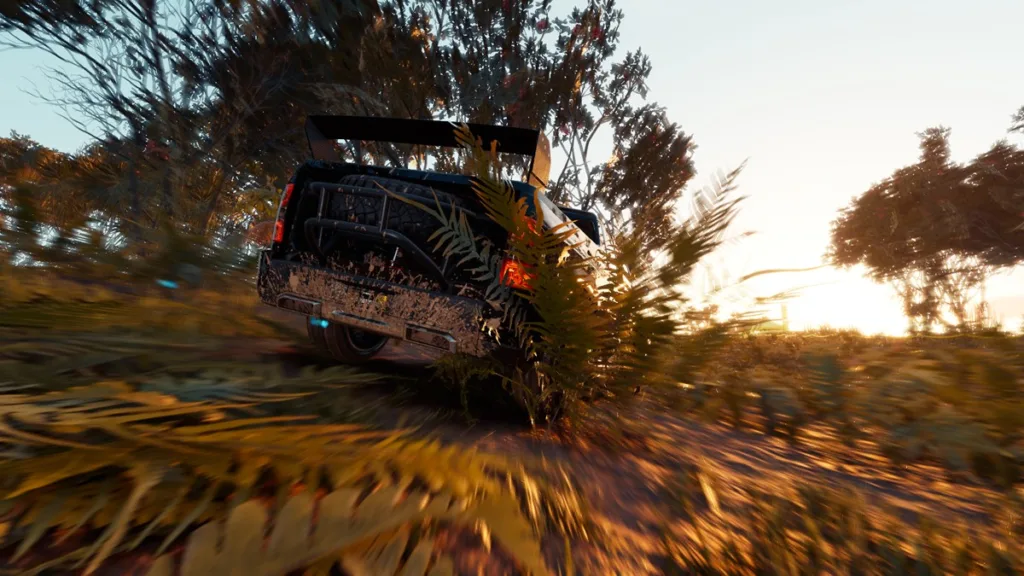
Motorfest is oozing with such granular detail as a car’s chassis ever so slightly vibrating when you rev its engine up (if its powerful enough), while holding its brakes steady. Motorcycles also do a little wiggle when braking hard, reacting to the drastic change in grip and friction. Off-roaders and street bikes are also all-around a lot of fun to drive, with the ability to even pull off flips when jumping from tall heights on dirt bikes.
Attention-to-detail has even been put into the avatar’s, with their clothes having realistic physics, and the animations when riding being expressive and smooth.
While the powerboats and planes are underutilized, even their mechanics have gotten some notable improvements. Weather now plays a big factor in their races, with both being affected by high-speed winds in certain sections.
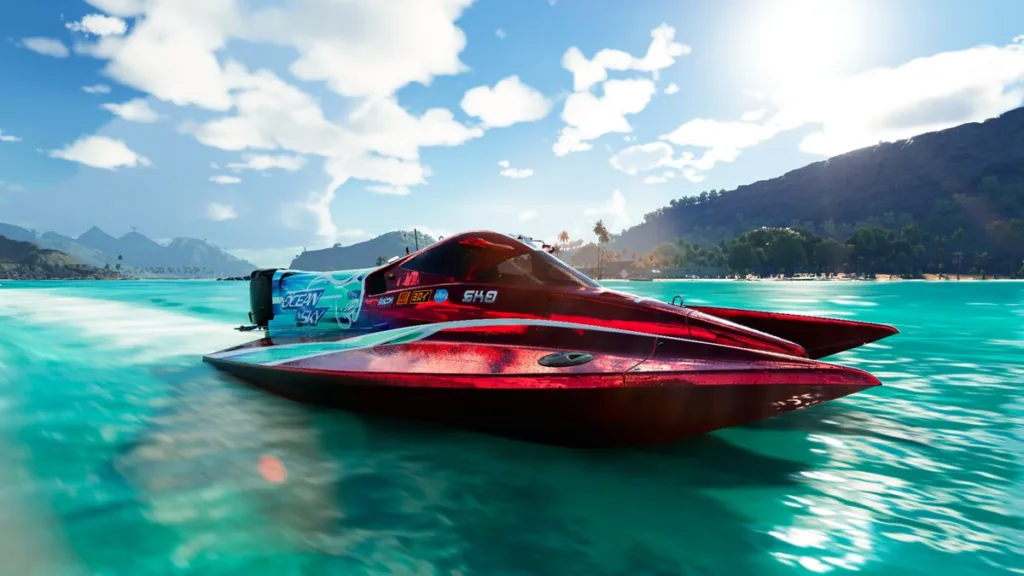
Boat races in particular feel more dynamic, as the races often meander between the calm, shallow waters close to shore, to the choppier seas further out. This forces you to trim the boat far more frequently and adapt to the motion of the ocean.
Planes do feel better, and also somehow worse. On one hand, the mechanics are slightly more refined, and when they work, they work well.
But, when they don’t, the aircraft often feels sloppy and heavy to control. Crash detection is also completely broken, as on numerous occasions I hit objects and my aircraft came to the ground in a simple thud, rather than resetting. The rewind feature helps, but the lack of a crash reset is bizarre.
With that being said, I hope air races are introduced at some point, because as small as the selection of airplane events already is, the quality is muddied further considering they all amount to just being ring challenges.
Speaking of muddy implementations,, I should also mention that Fast Travel is egregiously only available after completing a whopping ten Playlists, so prepare to make use of either your aircraft or hypercars to get around O’ahu quickly for the first several hours. But, here I go complaining again. This is supposed to be the ‘redemption section.’
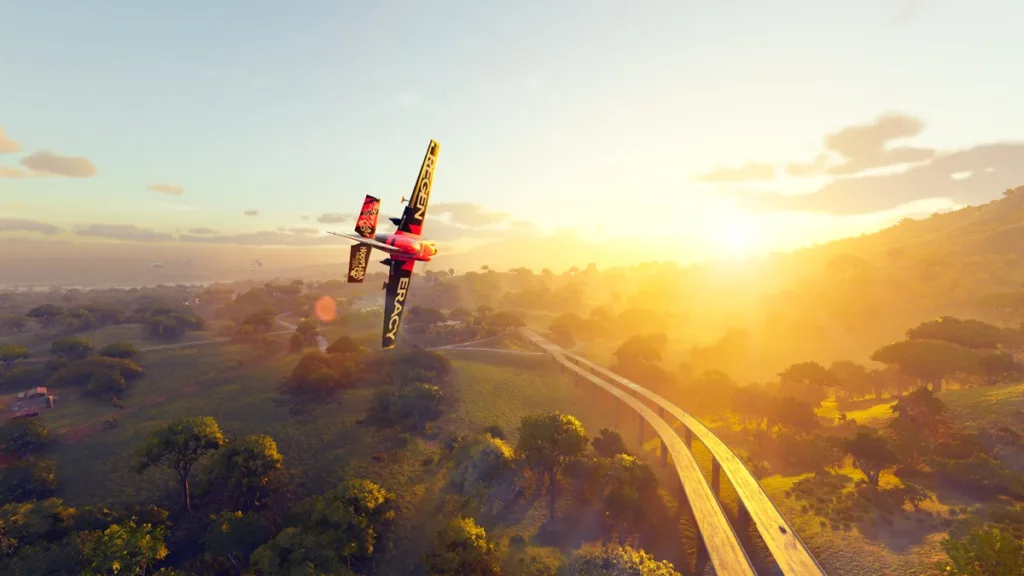
Fittingly then, the game’s presentation is easily the prime area of delight where I really have nothing to folly. I already touched on the granular detail of vehicle quality, but the high bar of quality certainly also applies to world detail, texture work, lighting, weather and volumetric effects.
Foliage dances in the wind and reacts to being touched, not to mention there is so many destructible objects. Your chances of being hauled by a military-grade tree are far slimmer here in O’ahu, which is a very welcome improvement. And, of course, whether its shrubs, or a stone wall or wooden fence—it all looks oddly satisfying getting pummelled into tiny bits.
The game’s colour pallet also deserves praise, as it oozes with vibrancy just about everywhere. The striking azure waters of the coasts, the lush green rainforests, colourful street art in Honolulu, and dark volcanic soil all make for a gorgeous backdrop both during activities and when exploring.
Golden hours, be it at dawn or dusk make for some fantastic light shows, as the intense Pacific sun beams brightly across the sky. As an islander myself, believe me when I say that tropical skies are truly next level, and Ivory Tower captured the magic of that spot-on.
Having said that, Hawaii is no stranger to extreme weather events, and the designers did a good job at representing that, too. Storms are properly menacing, and lighting strikes dance through the clouds. The pronounced rain and wind effects totally seal the deal. But, whether the sky is angry or not, cloud formations look superb at any given time. Of course, making use of the airplanes allows you to really soak in their beauty.
The quality of the vehicle models and scenery objects also all look very good. The Crew 2 being older and with a much larger map, while it still holds up today, does look so much simpler when compared to Motorfest.
Though pedestrians have been (oddly) removed, everything else about the scenery detail been enhanced, with even seemingly generic buildings like storefronts and residential homes having some decent quality and visual variety.

Water and wet surfaces also look stunning, with very well done reflections (which are likely cube mapped, but still look good), and a nice shading effect being applied to give depth to areas like mud and ripples made in bodies of water when driving through them. Dust also gets kicked up by cars and airplane propellers, and the depth and shading there is also remarkably beautiful.
The sound department hit it out of the mark, too, as not only does the surrounding soundscape of the scenery fit very well, but the engines of each machine are crisp and visceral. Listening with a pair of headphones has been a great experience, and on that note, the soundtrack has been a great time, too. My one fault of Motorfest’s sound design is that the dialogue of most of the disembodied Playlist presenters gets tiresome very quickly, but that’s nit-picking.
The Crew Motorfest – A parts bin special
Actually, though, I could nit-pick more. There are ghosts of players in the open-world that appear and disappear to a distracting degree, many parts of the game don’t feel properly explained, there’s a memory leak at launch issue here on PC, and the Photo Mode works well but is a tad wonky and can’t be activated during a race. If I looked for even more, I’m sure I could find some.
Truly, this has been one of the most confusing reviews I’ve ever conducted.
I liked The Crew 2 at launch, but thought it needed refinement. It got that refinement, and eventually became a much better experience, but that took a considerable amount of time.
In the half-decade since its release and the arrival of Motorfest, one would think all of that refinement would be applied to the new product and then some.
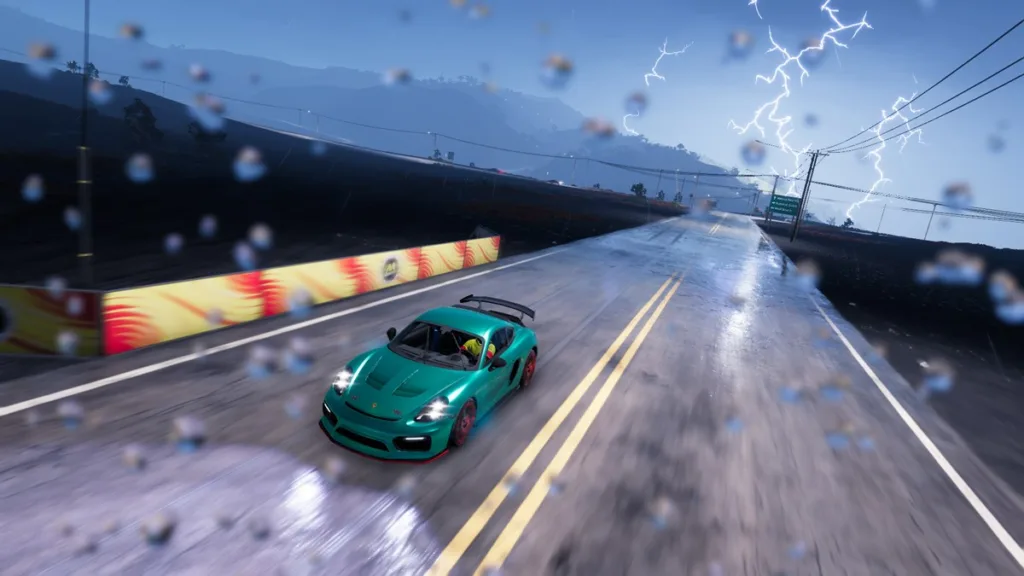
To an extent, that’s the truth, and also not. The Crew Motorfest does feel like it has the makings of a fantastic, dynamic, well-polished open-world racer, but its vision is muddied by poor pacing, a grind-centric ‘progression’ model, and far too brazen leaning on F2P mechanics despite being a full-priced retail game.
It boasts a huge bucket of vehicles, but hand picks them for the player and lets them use it in what feels like a tiny, fenced off area for a moment rather than allowing them to venture out. For an open-world racer that’s supposed to let you dictate a good chunk of your adventure, this system is an odd design choice, to say the least.
All things considered, there’s a lot to like here, but also just as much—if not a bit more so—to be confused by and perhaps even upset about.
I want to say this game is what the series needed, but just like its predecessor, I’m left currently waiting for what it could be down the road rather than happily accepting all that it is now.
On one hand, it’s good that modern games can be built upon and improved in real-time. But, I feel like more and more games are relying on this method of release, and the same seems to apply to The Crew Motorfest.
If this really is going to be another long-term project for Ivory Tower, then I’m genuinely excited to see where they take it. The fact that two other islands are so well-drawn on the map even gives the indication we’ll see a bigger world soon enough. But, what we have right now needs some TLC first and foremost.
It’s a good machine, but out of the gate, it’s running a bit rough.
The Crew Motorfest (PC): The Crew Motorfest goes 'full send' with shooting the series into a new direction—yet again. However, this time it's seemingly with a level of carelessness. Great strides have been made here, but not without issues. From a lack of meaningful progression, to maddening reliance on earning Credits for gameplay, there's almost as much to be annoyed about as there is to be impressed by. – A.K Rahming
Check out more content:
Can your PC run The Crew Motorfest? Here are the system requirements |

